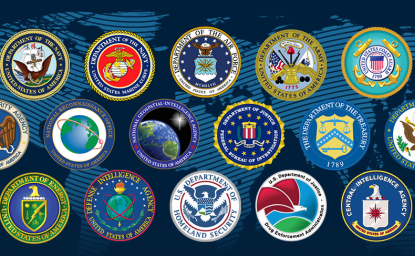Confronting the Many Faces of ISIS
ISIS has three major components: a proto-state, an Islamist network, and a state of mind.
ISIS has three major components: a proto-state, an Islamist network, and a state of mind.
ISIS has three major components: a proto-state, an Islamist network, and a state of mind. The three aspects are interconnected but must be confronted using different strategies, according to a new publication by Marina Ottaway, a Senior Scholar at the Woodrow Wilson Center. The following is an excerpt from the full report.
ISIS has at least three components, and policies that might help against one of these components may make attempts to combat the others more difficult. First, ISIS is a proto-state that controls territory in both Syria and Iraq—I will refer to this territory controlling organization as the Islamic State. The boundaries of this state are contested and the degree of actual control the leadership has on the territory is unclear; there are probably pockets of hard control and areas where the hold of the leadership is tenuous. But there is no doubt that there is a state in the making in parts of Iraq and Syria—a caliphate according to its leaders. This is the aspect of ISIS that has received the most attention. The United States and European countries only overcame their hesitation to re-enter the Iraq and Levant quagmire when ISIS overran Mosul. Nevertheless, this localized territorial state is not the most threatening aspect of ISIS, except for people living in or close to its territory.
Much more dangerous is the second aspect of ISIS as part of a network, or networks, of radical Islamist groups that operate across the Muslim world and beyond. The success of the Islamic State and the attention it has garnered by controlling territory have created an incentive for other groups to declare their allegiance to it. It is rarely clear what declaring allegiance means in practice. Does it mean that the organization receives orders from ISIS leader Abu Bakr al-Baghdadi and does his bidding? Does it mean that the group coordinates some operations with ISIS while essentially maintaining its autonomy? Does a group that declares allegiance receive financial support or conversely pay tribute? Does ISIS channel foreign fighters to it? Or is declaring allegiance simply a means for a group to increase its visibility and jihadi legitimacy? Most probably, no answer fits all organizations.
Third, ISIS is something even vaguer than these networks. For lack of a better term, I will define it as “ISIS as a state of mind”: the accumulation of grievances and resentment, anger, frustration, youthful idealism, religious fervor, and the desire for an exciting alternative to a drab life without a future. This state of mind attracts thousands of young men (and some women) from Muslim countries and the West to go fight in Syria and Iraq, or to carry out terrorist attacks in their own countries in the name of vague ideals and uncertain goals.
The three aspects of course are related but not in ways that are always clear. When angry young Muslims travel to Syria or Iraq, they do so to join a specific organization called ISIS. But when they return to mount lone wolf attacks in Western countries, they do not necessarily do so under order by ISIS or any other organization. And if the Islamic State was defeated and lost its territory, other radical organizations would probably stop declaring their allegiance to it and flock to another group, as others in the past turned from al-Qaeda to ISIS. Most importantly, the different aspects of ISIS cannot be fought with the same means.
Click here for the full article

Learn more about Hamas and how it relates to similarly aligned organizations throughout the region. Read more



